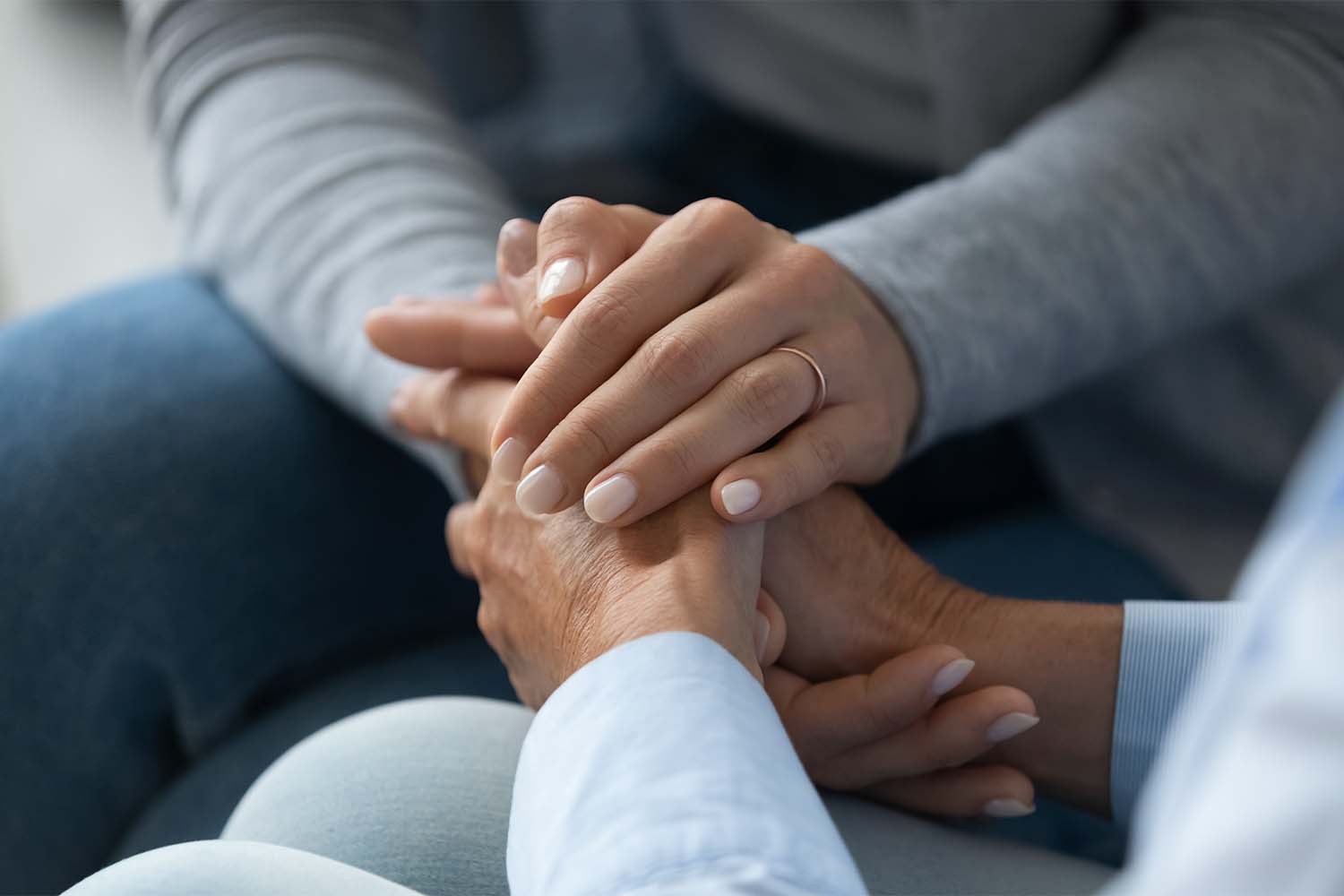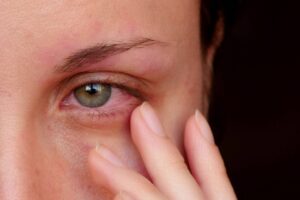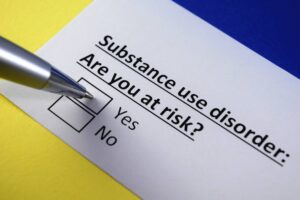Knowing when you have reached a problem with Klonopin drug use can be difficult. Some of the reasons that Klonopin is prescribed, like anxiety and panic attacks, can also surface in the withdrawal stage. Getting treatment for a Klonopin addiction is not always easy. It does require multiple steps and trying different methods to guide you through. Not everyone needs the same kind of treatment, so it’s about what works best for you or your loved one.
Most people struggling with a Klonopin addiction need to undergo supervised detoxification, followed by inpatient or outpatient therapy services.
If you can get through these steps with plenty of support behind you and a dedication to getting better, you can create a happier and healthier life.
What Is Klonopin (Clonazepam)?
Klonopin is the name brand for the drug Clonazepam. Klonopin is a long-acting benzodiazepine that stays in your system for a long time and eases your issues by working as a central nervous system depressant and slowing the brain.
Benzodiazepines help release the GABA neurotransmitter, which is supposed to be created during times of stress. When you struggle with anxiety, seizures, and mood disorders, your body doesn’t release enough GABA, so Klonopin can help increase this production and calm you down.
So, while it can be helpful to those who are in serious need of assistance due to their health issues, Klonopin is a drug that can easily become addictive and difficult to wean yourself off of. The sedation and relaxation that it puts a body through can become appealing and comforting to someone once they’ve become dependent on it.
What Are the Uses for Klonopin?
Klonopin is prescribed to treat patients who suffer from anxiety disorders, panic attacks, epilepsy, seizure disorders, and mood disorders.
With an increase in understanding how to treat different mood disorders, depression, and anxiety, the use of drugs like Klonopin are more prevalent. Though they are prescribed more frequently, it doesn’t mean that it can’t become a dangerous drug to use.
What Are the Side Effects of Klonopin?
If you begin to misuse your Klonopin, there are a variety of side effects that might arise. People that develop a Klonopin addiction may start by upping their dosage and taking more than is prescribed.
Soon it’s hard to achieve the same feelings on the regular dose, so more is needed. Side effects that come from this kind of misuse and overuse are:
- Trouble breathing
- A loss of appetite
- Paranoia
- Tremors
- Loss of memory
- Blurry vision
- Extreme anxiety
- Vomiting
- Dizziness
- Extreme sleepiness and fatigue
- Slowed reaction times
- Overdose
Who Is at Risk for Klonopin Addiction?
People who receive a prescription for Klonopin are the ones that have the highest risk of developing an addiction.
People with a Klonopin prescription who begin adding to their doses without consulting a doctor can experience extreme feelings of euphoria while taking it, which they then begin to crave.
What Are the Signs of Addiction to Klonopin?
If you begin to misuse Klonopin, you will end up with permanent changes in your brain structure that leads to addiction. Your body will be able to handle the small dosages that you are prescribed, and may eventually require higher doses to feel the drug’s effects.
While withdrawal and overdose symptoms are signs of addiction to Klonopin, which we will get into, some others to look out for are:
- Inability to maintain the responsibilities in one’s life
- Running out of Klonopin before the refill is due
- Being unable to lower the dosage
- Buying clonazepam on the streets
- Stealing other people’s Klonopin
- Seeking other benzodiazepines to use when there is no access to Klonopin
- Avoiding situations where Klonopin won’t be able to be used
If you notice that you or a loved one is beginning to struggle more with their drug use, is avoiding spending time with their friends and family, and has been acting out, contact a medical professional immediately to learn about treatment options.
Overdose Symptoms
Klonopin is a long-acting drug, and though you can overdose from any benzodiazepine, there are other complications to consider with Klonopin. If you’re taking too high of doses or are taking Klonopin frequently, you could create a build up of the drug in your system that could lead to an accidental overdose.
People who use Klonopin also risk overdosing if they mix Klonopin with other substances, like alcohol or opioids. Some signs that someone is undergoing an overdose related to Klonopin are:
- Bluish lips or fingertips
- Unbalanced
- Unconsciousness
- Sedation
- Lack of coordination
- Clammy and sweaty skin
If someone is experiencing these symptoms, they need medical help immediately. Medical professionals might be able to administer romazicon, which reverses the effects of clonazepam overdose.
Withdrawal Symptoms
Someone who is experiencing withdrawal from Klonopin will be undergoing a world of pain. It can be very uncomfortable and painful to go through a withdrawal from clonazepam.
If you are experiencing a withdrawal from this drug, you might be very tempted to use more so that you can alleviate your symptoms. Finding a detoxification center can help you through this very difficult and painful time.
When you are going through a Klonopin withdrawal, you might experience:
- Increased heart rates
- Higher blood pressure
- Insomnia
- Vomiting and diarrhea
- Muscle spasms
- Lack of appetite
- Sweating
Stopping the Use of Klonopin
Quitting Klonopin cold turkey is not recommended and weaning yourself off is best. Doing this under medical supervision in a detox center can ensure your own safety and success.
You’re going to feel a lot of pain and discomfort during the withdrawal, and if you try to quit “cold turkey” you might find yourself even more sick and uncomfortable. By controlling your intake and being under supervision, it’s a lot easier to go through the process and end up stronger on the other side.
Finding the Right Treatment
Everyone is different. No two people require the same kind of care and attention, and that goes for drug addiction as well. Everyone has their own background and story, which means they require unique care. Finding a treatment plan that works for you is key in your addiction recovery journey. If you want to see results, you need to do what is best for you.
When you are struggling with an addiction to Klonopin, it might be that you already are struggling with your mental or physical health, hence why you were prescribed it. In order to get the full recovery effect from your addiction, you need to treat all parts of your body that are connected to it. You need to undergo detoxification, therapy sessions, group therapy, and other methods that can lead you to success.
There is no shame in getting help for your addiction. One of the strongest and toughest things you can do is get help for yourself and change your life.
Detoxification
People with a Klonopin addiction are encouraged to go through medical detoxification. This means that you are under supervision 24 hours a day while you go through withdrawal. The detoxification process can be very difficult, and especially with a long-acting drug like Klonopin.
Most professionals will not let you quit cold turkey, but will encourage you to go through a Medically Assisted Therapy (MAT), which involves low doses of the drug to help wean yourself off. This is the safest way to go through the detoxification process, but if not done while supervised can lead to continued use.
Inpatient
After undergoing a detox, you won’t just be let back out into society to fend for yourself. Now that you are no longer using, you will be agitated and confused, and this is when the next treatment step begins.
With inpatient services, you stay monitored by staff at your addiction recovery center and are guided through recovery. You will go through both individual and group therapy sessions where you learn more about your own mental health and work to build a community with people struggling with the same issues.
Inpatient care is great for someone who has a heavy dependency on a drug, because these facilities work to improve both your physical and mental health. They understand that therapy can help with your psychological state, so it’s always encouraged.
If you are in for Klonopin addiction, it’s likely that you struggle with your mental health already. Inpatient works to encompass all your struggles and find the best way to treat you for them.
Outpatient
After undergoing inpatient services, you might still want the additional support of group therapies or individual sessions, but with more freedom. Outpatient services allow you to leave the center and go on with your everyday life, but with set times and days that you have to come for sessions or treatment.
For people who are feeling confident with their Klonopin addiction but still need the structure that therapy gives, outpatient is a perfect opportunity to receive continuous care.
Getting Help With Soba Recovery
With Soba Recovery Centers, you can access detoxification, inpatient, and outpatient services with ease. With two locations in Mesa, Arizona, and San Antonio, Texas, you can find what you need to treat your addiction.
Getting help should not feel taboo. If you are choosing to get help so that you can live a happy and healthy life, then do it! And we want to help.
At Soba, you receive top-of-the-line care however will best support your needs. We work to create an individual treatment plan that has your best interest in mind, so you can walk out a better version than you came in as. Get help today by reaching out to a Soba representative to learn about how we can help you overcome your Klonopin addiction.
Sources:
Klonopin (Clonazepam): Uses, Withdrawal & Addiction Treatment | American Addiction Centers





